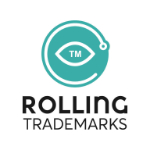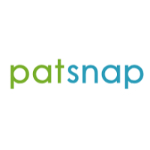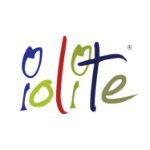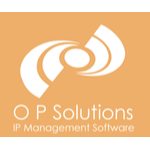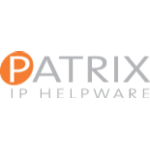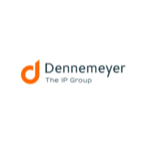List of Best Intellectual Property Software
Showing 10 of 24 productsBuildium is a solution for property management. Say goodbye to the hassle of manual tasks and hello to streamlined efficiency. With Buildium, you can easily manage rental properties, keep track of finances, and communicate with tenants all in one pla...Read Buildium Reviews
Rolling Trademarks is a software that streamlines the trademark registration process for businesses of all sizes. With its user-friendly interface is a features, Rolling Trademarks simplifies the trademark application and monitoring process, allowing...Read Rolling Trademarks Reviews
PatSnap provides innovative solutions for businesses to navigate the complex world of intellectual property. Our software allows users to easily access and analyze data to make informed decisions about their patents, trademarks, and other forms of in...Read PatSnap Reviews
Iolite PMS is a property management software that simplifies and streamlines your daily operations. With its user-friendly interface and robust features, Iolite PMS is the perfect solution for managing your property, reservations, and guest services...Read Iolite PMS Reviews
PATTSY is a software designed to simplify your productivity and revolutionize your workflow. Say goodbye to tedious tasks and hello to streamlined processes with PATTSYs user-friendly interface and intelligent features. Boost your efficiency and take...Read PATTSY Reviews
Patricia is a brilliant mind behind our innovative software. With years of experience in the tech industry, Patricia has developed a unique and user-friendly platform that will revolutionize the way you work. Her expertise and dedication have brought...Read Patricia Reviews
$ FoundationIP is more than just a software, it is a intellectual property management solution designed to streamline and optimize your IP processes. With intuitive features is a tools, FoundationIP allows you to maintain control and visibility over...Read FoundationIP Reviews
DIAMS iQ is a solution for all your business needs. This innovative software offers a seamless is a way to manage your data, streamline processes, and drive growth. With its advanced features and user-friendly interface, DIAMS iQ is a game changer fo...Read DIAMS iQ Reviews
Equinox is a software that revolutionizes the way businesses operate. With its advanced features, Equinox streamlines processes and increases efficiency, giving businesses a competitive edge in todays fast-paced world. This innovative software is des...Read Equinox Reviews
AcclaimIP, the innovative solution for all your intellectual property needs. Seamlessly navigate through vast databases, conduct detailed patent searches, and analyze valuable insights with ease. Prepare to elevate your IP strategy and gain a competi...Read AcclaimIP Reviews
- What Is Intellectual Property Software?
- Top Reasons Why Businesses Need Intellectual Property Software?
- What Are the Top Key Features of Intellectual Property Software?
- What Are the Top Benefits of Intellectual Property Software?
- What Are the Steps to Choose the Right Intellectual Property Software?
- What Are the Types of Intellectual Property Software for Different Industries?
- What Are the Technology Trends for Best Intellectual Property Software?
- What Are the Deployment Options for Intellectual Property Software?
What Is Intellectual Property Software?
Intellectual property software is a sort of software that teaches businesses how to safeguard their employees' and shareholders' intellectual property (IP). It covers patents, copyrights, trademarks, and other sorts of intellectual property.
The software assists businesses in protecting their intellectual property assets and staying up to date on the latest advancements in intellectual property management tool legislation. In a word, intellectual property software enables businesses to track the ownership of ideas, inventions, brand identities, and compositions.
It is intended to assist businesses in ensuring that the information or intellectual property tracking software they hold remains theirs. It also supports the enforcement of intellectual property rights by providing timely notifications of infringements and information about ongoing legal procedures.
Companies that use IP software can prevent potential legal complications in the future. Having an up-to-date awareness of legal changes, as well as a good system for monitoring who owns what, are critical components of any effective IP strategy.
Companies may preserve their precious creative and the best intellectual property software assets and seek possibilities that would otherwise be missed by employing IP software.
Top Reasons Why Businesses Need Intellectual Property Software?
1. To safeguard the original creative works of enterprises, such as literary works, musical compositions, and photos.
2. To obtain exclusive rights to a company's designed or created products, services, and procedures.
3. To ensure that intellectual property management tool regulations, such as copyright, trademark, and patent statutes, are followed.
4. To register original trademarks, copyrights, and patents.
5. To make royalty payments and licensing agreements with other businesses and individuals more efficient.
6. Keeping track of intellectual property software rights throughout the product life cycle.
7. Maintain ownership, transfer, and licensing records for works and goods.
8. To avoid the infringement of third-party top intellectual property software rights.
9. To avoid potentially costly lawsuits or settlements resulting from unlawful use of protected works or materials.
10. Accurately determining the worth of a company's intellectual property tracking software in preparation for prospective acquisitions, investments, and other business transactions.
11. Improve the management of organizations' intellectual property protection software and asset portfolios.
12. To give present and future intellectual property management tool knowledge and direction.
13. To make it easier to monetize intellectual property, such as patent portfolios.
14. To have access to online databases for cost-effective intellectual property docketing software research and analysis.
15. To give marketing leverage by emphasizing a company's distinctive and inventive works.
What Are the Top Key Features of Intellectual Property Software?
The top key features of intellectual property software include:
• Automated Copyright Notices: This functionality enables users to conveniently and automatically register and oversee copyright notifications for their intellectual assets.
• IP Asset Management: This functionality offers users the capability to store, manage, and monitor the best intellectual property software assets inside a structured and secure platform.
• Digital Rights Management (DRM): This functionality enables the user to exercise control over the utilization of their intellectual property software by external parties. The system guarantees the protection of users' intellectual property (IP) and the preservation of licenses and rights.
• Intuitive User Interface: This functionality enables users to efficiently retrieve and oversee their top intellectual property software assets through a unified and user-friendly interface.
• IP Authentication & Verification: This functionality serves to authenticate intellectual property, ensuring its originality and integrity by detecting any instances of plagiarism or unauthorized modifications.
• Online Dispute Resolution (ODR): This functionality allows users to contest instances of intellectual property management tool infractions within a protected digital setting.
• Analytics & Reporting: This functionality offers users a full overview of their intellectual property (IP) portfolio, encompassing various KPIs, usage analytics, and more information.
• Licensing: This functionality enables users to efficiently generate and oversee licenses for their intellectual property management tool assets.
• Customizable IP Dashboard: The provided functionality enables users to personalize their perspective of their intellectual property tracking software portfolio through the utilization of drag-and-drop widgets, sorting and filtering capabilities, and additional features.
What Are the Top Benefits of Intellectual Property Software?
1. Protection: The use of intellectual property management tool enables enterprises to safeguard their innovative creations from unauthorized replication or utilization by competitors.
2. Monetization: The best intellectual property (IP) software has the potential to create money for organizations through its ability to facilitate the marketing and licensing of their inventions.
3. Vision: IP software can offer firms valuable insights regarding potential chances for additional development or partnership.
4. Compliance: The utilization of top intellectual property docketing software enables firms to maintain compliance with relevant rules and regulations, thereby safeguarding them from potential financial liabilities arising from legal proceedings.
5. Adaptability: IP software enables businesses to effectively respond and adapt to the dynamic and evolving market trends.
6. Assets Management: Intellectual property law software facilitates the effective management of IP assets within enterprises, enabling the monitoring and organization of current resources, hence resulting in enhanced operational effectiveness.
7. Litigation: Intellectual property (IP) software has the capability to offer assistance in the context of litigation or disputes arising from the infringement or violation of intellectual property rights.
8. Promotion: The utilization of the best intellectual property software can effectively engage potential investors and partners, while fostering brand visibility and establishing confidence.
What Are the Steps to Choose the Right Intellectual Property Software?
1. Identify Your Needs: Before selecting an appropriate intellectual property management tool, it is imperative to ascertain the specific features that are necessary for the program.
One should engage in a critical self-inquiry on the precise objectives of the intellectual property management tool, encompassing factors such as the magnitude of data it is required to handle, the extent of its applicability, its user-friendliness, its accessibility, and other pertinent considerations.
2. Research Options: After the identification of one's needs, the next step is conducting research on the best intellectual property software that is now accessible. Several widely used software alternatives in the field include Adobe Acrobat Pro, FileOpen, QuarkXPress, Corel Draw, and Microsoft Office.
Thoroughly examine each available choice to have a comprehensive understanding of their respective features, pricing structures, and user reviews.
3. Test Each Option: After the process of narrowing down the list of options, it is advisable to conduct tests on each alternative to determine the one that most effectively fulfills the specified requirements. This can encompass the creation of several experimental initiatives or the fulfillment of uncomplicated assignments.
Additionally, it is possible to contact the support team of the intellectual property tracking software to inquire about any queries you may have.
4. Compare Prices: After conducting tests on each software choice, the next step is to commence the process of comparing their respective prices. Examine the characteristics and attributes presented by each system to determine which option affords the optimal value within the constraints of your budget.
5. Make Your Decision: After conducting tests on each available option and conducting a pricing comparison, the next step is to conclude. Take into account any input that has been provided by those who have evaluated the intellectual property protection software, in addition to evaluating the extent to which the software fulfills your requirements.
After concluding, one may proceed with the integration of the intellectual property docketing software into the operational procedures of the business.
What Are the Types of Intellectual Property Software for Different Industries?
Various industries utilize different types of intellectual property software, encompassing copyright protection software, trademark protection software, patent protection software, trade secret protection software, and licensing protection software.
Copyright protection software serves as a safeguard against the illicit utilization of protected content, including various forms such as music, literature, art, and software code. Trademark protection software is designed to provide security for business names, logos, slogans, and other identifying elements that are linked to products and services.
The utilization of patent protection software serves to safeguard novel inventions by preventing unauthorized replication and utilization. The utilization of trade secret protection software serves to safeguard proprietary information and maintain the confidentiality of sensitive data.
Licensing protection software ensures the appropriate management of licenses and agreements, including software subscriptions.
What Are the Technology Trends for Best Intellectual Property Software?
Within the domain of intellectual property software, a prominent development in the technology industry pertains to the increasing prevalence of artificial intelligence (AI).
The utilization of AI-powered software can automate various processes and conduct data analysis, thereby enabling the identification of potential infringements of copyright and trademark laws, as well as the detection of counterfeit activities.
Artificial intelligence (AI) can detect and analyze patterns, a feature that proves advantageous in the context of copyright law, specifically. In addition, software powered by artificial intelligence can swiftly and precisely evaluate extensive quantities of data, enabling organizations to promptly detect and address possible concerns.
One other development observed in the realm of intellectual property management tool pertains to the rise of cloud-based solutions. This technological advancement facilitates the utilization of software across several devices without necessitating its installation on each device, hence diminishing the requirement for physical storage and software upkeep.
Furthermore, the utilization of cloud-based the best intellectual property (IP) software offers a secure and efficient platform for the rapid and protected processing of data. This enables IP attorneys and organizations to conveniently access their information from any location. The utilization of blockchain technology is gaining momentum within the intellectual property software domain.
The utilization of blockchain technology enables the secure storage of top intellectual property protection software records, the establishment of ledgers for the systematic monitoring of modifications, and the facilitation of intricate licensing agreements.
Blockchain systems provide a robust and reliable mechanism for storing intellectual property management tool law software information, accompanied by a transparent and immutable record of ownership. This feature facilitates the efficient detection and identification of counterfeit products.
What Are the Deployment Options for Intellectual Property Software?
Deployment options for intellectual property software generally include:
1. On-Premise Deployment: This particular deployment method entails the installation of software on physical hardware that is situated at the designated location. Typically, the financial burden is greater as the organization is required to procure, implement, and sustain the hardware and software components.
2. Cloud Deployment: This particular deployment method entails the hosting of the software on remote cloud servers. This approach is frequently more economically advantageous as it absolves the organization from the need to procure, install, and upkeep the hardware and software, instead requiring them to solely remunerate for the duration of usage.
3. Software-as-a-Service (SaaS): This particular deployment method entails the act of subscribing to the software regularly. Frequently, this alternative proves to be the most economically advantageous, as the organization assumes financial responsibility for the service over a continuous period without making any initial capital outlays.

